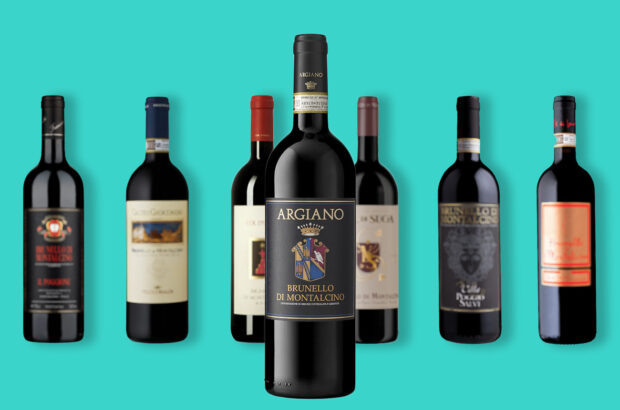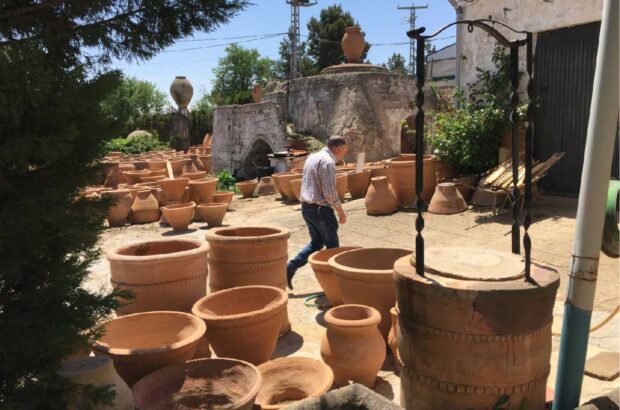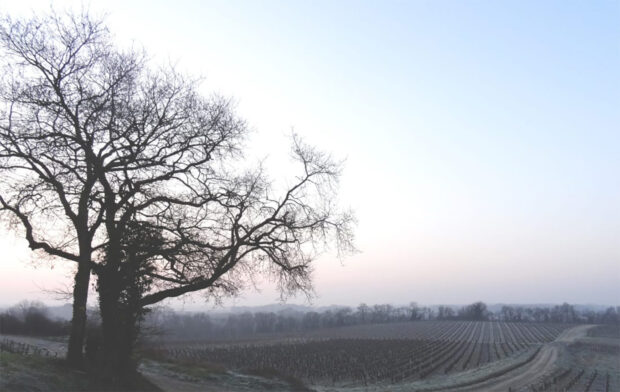- The region has the terroirs and grape varieties – Grenache, Mourvèdre, Syrah and, more recently, Cabernet – necessary for reds.
- Most Provençaux use barriques for their reds but the constant worry is that the effect will be too marked.
- Almost all these producers have trouble getting into the UK and US.
This is no time to be in Provence. The heavens have opened, and aren’t going to close for four days. Ditches and rivers are filling while hotels are emptying. ‘Its good for the level of the water table,’ says Jean-Jacques Bréban, négociant and president of the Côtes de Provence wine trades board. I can’t help thinking that the water table will be up to our necks soon and then where will that leave the Provençal red wine business?
Red wine
By this point we are under cover and talking red wine. Yes, yes, red wine – in Provence. That this still comes as a surprise shows how slow on the uptake the wine world can be. With great obstinacy, it persists in associating the Côtes de Provence (CdP) only with cheerful rosés destined for the sun-seekers. There is, of course, nothing wrong with this image, but it hasn’t been the full Provençal wine picture for some time now. Structured rosés for winter drinking have come along and so has a most interesting array of reds.
The region has the terroirs and grape varieties – Grenache, Mourvèdre, Syrah and, more recently, Cabernet – necessary for reds. What it lacked in days of yore was motivation. Selling jolly pinks to obliging tourists was simple and kept everyone happy.
Then a new generation showed up. Many were investors from afar who knew that the outside world didn’t take rosé very seriously. If they wanted to make their mark, to get onto the lists in the classier restaurants, they needed reds. Sad, perhaps, but true.
Wineries and vineyards
The first stop is the Domaine du Thouar, outside Le Muy. We dash in out of the rain to vast cellars overseen by Aya Kerfridin and an essentially feminine platoon of family members. I always find this appealing and, even if I didn’t, the wine would bring me round. Château Testavin from the excellent 1998 vintage provides opening evidence that CdP reds can develop lightness and length, fruit and structure – rewarding right now or in, say, five years.
Next stop is Château d’Esclan near La Motte. The grounds are tidy and the buildings a reassuring marriage of new tech and old stone. This is the Swedish domain of Lars Torstenson, in Provence on behalf of Vin & Sprit, the former Swedish booze monopoly. It already owned the Domaine Rabiéga, near Draguignan when it purchased Esclan and, again, Torstenson’s meticulous flair is in evidence here. If you thought Carignan had had its day, his 1995 Carignan-based brew (called, inspirationally, Carbase) will put you right. There’s a Mourvèdre mix, too (Mourbase) and a quite extraordinary passerillage treatment of Cinsaut, at once sweet, spicy and dry. Clos Dière Cuvée 1 might remain Torstenson’s finest achievement (try 1996) but the lad never stops surprising.
And so to Lorgues, to dinner with four local producers. Conversation turns naturally to maritime adventure: Roger Tordjman spent 15 years wandering, then racing the oceans before taking over the Domaine de l’Estello last year, while British gentleman-viticulteur, Lindsay Phillips, at the Domaine Saint-Marc-des-Omèdes has a family history studded with admirals. Both are unjustifiably modest about their wines. Tordjman’s 1998 Argent is an appealing easy drinker. The 1998 Sextant d’Or still slightly astringent but time will do its work. Phillips took to wine after a career with IBM. His 1998 has a chocolatey nose, soft, silky finish and excellent value cellar price of FF25 (£2.50).
Across the table is Bruno Guillermier, oenologist at the Château de Berne, which was already Provence’s best wine visitor centre and, in 1999, added a posh-looking auberge with a wine and cookery school. I’ve always been a sucker for Berne’s Cuvée Traditionnelle and, from a difficult year, the 1997 doesn’t disappoint – with notes of leather and cherry brandy and the structure to see out a decade.
Equally interesting, though perhaps more subtle, is a 1997 Harmonie from Domaine Saint Jean Baptiste where Brigitte Grivet has established a redoubtable reputation. ‘Lorgues has chalky soil which gives a mineral feel common to our wines,’ she says. I agree, feeling it would serve no purpose to disagree with Mme Grivet.
To the west is Taradeau cooperative. This is a splendid outfit with, at the heart of its range, a 1998 Rougian offering the spicy, gamey nose we are now recognising as typical of Provençal reds plus roundness and suppleness once tasted. Top of the bill is, however, Oppidum. At FF35 (£3.50), it boasts rich red fruit and length well surpassing wines considerably more expensive.
We make a detour via the Maison des Vins – the CdP’s HQ at Les Arcs-sur-Argens – where a posse of producers has gathered. From La Londe-les-Maures on the coast, Châteaux Sainte-Marguérite and Galoupet dispel some of the doubts expressed (there are many) about CdP’s cru classé system. Both have the classification and wines of great breeding – Sainte Marguérite’s in concentration and power, Galoupet’s in flower and red fruit balance.
Our attention is drawn to the much smaller Château Marouine where, Jean-Pierre and Marie-Odile Marty concentrate old-vine Carignan and Mourvèdre into a vin sauvage of mineral depth. Few wines talk better of their natural surroundings than Alain Combard’s Grande Cuvée Vieilles Vignes from the Domaine Saint André de Figuière, also at La Londe-les-Maures. Ex-Chablis producer Combard has 100-year old Carignan, and Mourvèdre, on schisty land overlooking the Mediterranean.
Just up the road is Château la Maïme, whither Jean-Louis and Véronique Sirban moved from Bordeaux recently. They’re a young couple charged with charm and enthusiasm and in their first, 1998, vintage are still at the experimental stage. The result is a red presently a bit closed but with body, finesse and balance amply detectable. Jean-Louis has evidently not forgotten that his roots are Bordelais.
His mentor in Provence is oenologist Jérôme Paquette, who also directs the Domaine de la Bastide Neuve at Le Cannet-des-Maures on behalf of Swiss owners. Like Lars Torstenson, Paquette is a restless thinker and innovator. He has analysed just about everything, most recently, the use of wood.
Most Provençaux use barriques for their reds but the constant worry is that the effect will be too marked. Delving into Provençal history, Paquette came across ‘la boute’ – a barrel bigger than a barrique, smaller than a foudre and with just the right, mellow impact. The Bastide Neuve’s Cuvée d’Antan was already one of the few Provence wines which rewarded a vertical tasting back to 1988.
Our next stop is Château Réal d’Or, near Gonfaron which also puts on a neat vertical. If the rain abated even for a second, we could appreciate the magnificent setting at the northern foot of the Maures. But it doesn’t, so we can’t. Thank heavens, then, for the welcome and wines of Elphège Bailly, one of the region’s most experienced oenologists. Her Syrah-based wines thus represent a classic Provençal progression – from round, red fruit in more recent vintages to the smokey, game and leather notes of her 1990.
Next day, Château Mirabal, outside Le Val, looms through the downpour alarmingly. It was once owned by the inventor of reinforced concrete (the cave is all but indestructible) and, more recently, by French musician Jacques Loussier. Now in American hands, the emphasis has been returned to wine and the results wear their structure and concentration with deceptive lightness.
Our final rendezvous is in the Sainte-Victoire, a distinct district, cut off from the rest of the CdP, with its own geology and own climate (though not today; it’s tipping down here as everywhere else and the majesty of the St-Victoire Mountain can only be estimated). Producers are consequently driving for official recognition as a ‘sub-region’ of the CdP – a sort of cru status – but they’ve been doing so for a decade, so aren’t holding their breaths.
What they are doing is producing reds which indeed have a slight family likeness and which are among the best in Provence. From Château Baron Georges, Anthony Gassier brings a short maceration 1997 with easy fruit and length, plus a weightier 1995. The Danish-owned Château Grand Boise has a Cabernet-rich 1993, showing that the Bordeaux grape can indeed take its place in Provence.
Fabienne Joly’s 1996 Clos La Neuve is a delight (as is the lady herself, though tough luck to be called Joly if you looked like a saucepan). It’s fine, herby but built to last – as, supremely, are the reds from the Sumeire family HQ, Château Coussin. These latter range back to 1986 boasting, variously, notes of violet, truffles and leather and structures which, even in the oldest vintages, never over-impose. There’s silkiness throughout. Strong competition, then, but Guy Négrel from the Mas de Cadenet is used to it. His lightness of tone belies seriousness of purpose, and almost exactly the same can be said of his superb 1997 Négrel Cadenet.
We leave the table impressed – as we have been earlier in the day by the co-operative at nearby Rousset. Its Fontjuane and Les Pierres des Moulins, both 1996, show that the coop need fear no-one in the mid range. Two questions rankle, however. Almost all these producers have trouble getting into the UK and US: what, I wonder, is the matter with us? And, secondly, just how high does a water table really need to be?











